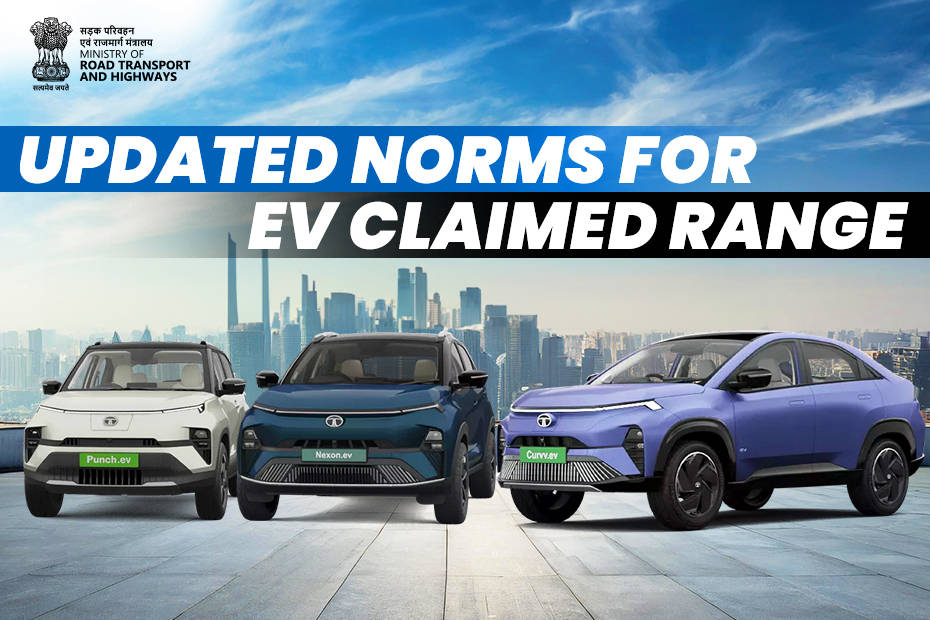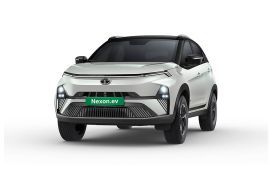
Does Passenger Load Affect EV Range? Feat: Nexon EV
- Aug 3, 2024
- Views : 12630


If you own an electric vehicle, or have driven one, then you must be aware of the fact that the real-world range you get from your EV is much less than the figure claimed by the manufacturer. The reason for this difference is that these EVs are tested in controlled environments and the parameters for the tests are much different than what you would get in your day-to-day driving.
Also, cars from different brands can sometimes have claimed ranges tested using different standards such as ARAI, WLTP, CLTC, MIDC, and more, which have different testing parameters, and provide varying results.
Also Read: You Can Now Book The MG Windsor EV At Select Dealerships
To streamline this process, India’s Ministry of Road, Transport, and Highways (MoRTH) has made the MIDC testing parameters standard for all EVs, and have also updated the testing conditions to give the cars more accurate claimed ranges. Here is a breakdown of the old and the updated parameters.
|
URBAN (P1) |
|
|
Average Speed |
19 kmph |
|
Max. Speed |
50 kmph |
|
Air Conditioner |
Off |
|
Load |
150 kg |
|
Temperature |
20-30 Degrees Celsius |
|
Usage |
City Only |
The older testing parameters, known as “Urban” or “P1” parameters, tested the claimed ranges of the EVs in extremely controlled environments, the tests were done at much less speed than what you would usually drive at, and these tests were done for city use only.
Due to these standards, the claimed ranges were much higher than the real range you would get from your mixed driving conditions. To rectify this and bring the claimed ranges close to real world ranges, MIDC has improved the testing parameters.
|
URBAN + EXTRA URBAN (P1 + P2) |
|
|
Average Speed |
31 kmph |
|
Max. Speed |
90 kmph |
|
Air Conditioner |
Off |
|
Load |
150 kg |
|
Temperature |
20-30 Degrees Celsius |
|
Usage |
City + Highway |
In the new testing parameters, MIDC has included highway driving and has increased the average speed of the car. These new parameters provide a slightly more accurate claimed range, one which is closer to what you will get in your day-to-day driving.
Also Read: Tata Curvv vs Hyundai Creta: Should You Pick The Stylish SUV-coupe Or The Top-selling Compact SUV?
All EVs in India will now be tested using this new “Urban + Extra Urban” parameters, and all manufacturers have been asked to declare the new claimed ranges of their EVs as per the updated testing standards.
However, as you can see, these testing parameters are still far away from the real world conditions, and for that, Tata has come up with their own parameters, called “C75”.
|
C75 |
|
|
Average Speed |
40 kmph |
|
Max. Speed |
120 kmph |
|
Air Conditioner |
On |
|
Load |
Multiple load cases, maximum 250 kg |
|
Temperature |
10-40 Degrees Celsius |
|
Usage |
City + Highway + Regenerative Braking |
These testing parameters are even more stringent and apart from a higher load, they also account for the use of AC and regenerative braking along with the varying temperature conditions.

From here on, Tata will reveal the C75 range of its EVs along with the claimed range as per new MIDC standards, and here are the new ranges claimed by Tata.
|
Model/ Variant |
MIDC P1 (OLD) |
MIDC P1 + P2 (NEW) |
C75 |
|
Curvv EV 55 kWh |
585 km |
502 km |
400-425 km (Estimated) |
|
Curvv EV 45 kWh |
502 km |
430 km |
330-350 km (Estimated) |
|
Nexon EV 40.5 kWh |
465 km |
390 km |
290-310 km |
|
Nexon EV 30 kWh |
325 km |
275 km |
210-230 km |
|
Punch EV 35 kWh |
421 km |
365 km |
270-290 km |
|
Punch EV 25 kWh |
315 km |
265 km |
190-210 km |
|
Tiago EV 24 kWh |
315 km |
275 km |
190-210 km |
|
Tiago EV 19.2 kWh |
250 km |
221 km |
150-160 km |
Here, you can get an understanding of how these parameters affect the claimed driving ranges, and you can also get an idea of why there is such a difference between the claimed and real-world ranges. If tested in ideal and controlled conditions, the claimed range will be much higher, but once you start to factor higher speeds, more load, and the use of features like air conditioning, the actual range comes down dramatically.
Also Read: 2024 Tata Curvv EV: Is The Rear Seat Comfort As Good As The Overall Experience?
Tata’s C75 ranges appear to be the closest to real-world conditions, and are the most accurate. However, these only apply to Tata models, and other brands will now have to update the ranges of their EVs according to the new MIDC parameters. Do you think other carmakers should follow Tata’s charge in giving more realisting range figures for more transparency? Let us know in the comments below.


Does Passenger Load Affect EV Range? Feat: Nexon EV

Tata Motors Showcases Nexon EV Bandipur Edition At Auto Expo 2025

Drive To Death: Here Are The Car We Drove Out Of Range In 2024

Check Out The Tata Nexon EV Red Dark Edition In 7 Real-life Images!

Tata Nexon EV Is The First Electric Car In India To Offer Two Sunroof...

Tata Nexon EV Gets More Range With Larger Battery Pack, A Hot Red...

2024 MG Windsor EV Vs Tata Nexon EV: Which EV Should You Bring Home?

Tata EV’s Receive MASSIVE Price Cut Along With 6 Months Free...

Tata Nexon EV vs Mahindra XUV400: Which Electric SUV Charges Quicker?
 Hyundai Creta Electric
Hyundai Creta Electric
 MG Windsor EV
MG Windsor EV
 Tata Curvv EV
Tata Curvv EV
 Tata Tiago EV
Tata Tiago EV
 Tata Punch EV
Tata Punch EV
India's largest automotive community
 Here’s How Being Chauffeured In A Mahindra XEV 9e Feels Like
Here’s How Being Chauffeured In A Mahindra XEV 9e Feels Like
 You Should Pick The Maruti Suzuki Celerio Over Wagon R For This Reason!
You Should Pick The Maruti Suzuki Celerio Over Wagon R For This Reason!
 Maruti Suzuki e Vitara Reaches Dealerships Ahead Of Launch! Check Out What The Hyundai Creta Electric Rival Offers…
Maruti Suzuki e Vitara Reaches Dealerships Ahead Of Launch! Check Out What The Hyundai Creta Electric Rival Offers…
 Have A Look At The All New Designed Mahindra SUV Dealership Unveiled In Mumbai
Have A Look At The All New Designed Mahindra SUV Dealership Unveiled In Mumbai
 Tata Punch
Rs. 5.99 Lakh
Tata Punch
Rs. 5.99 Lakh
 Tata Nexon
Rs. 7.99 Lakh
Tata Nexon
Rs. 7.99 Lakh
 Tata Curvv
Rs. 9.99 Lakh
Tata Curvv
Rs. 9.99 Lakh
 Tata Tiago
Rs. 4.99 Lakh
Tata Tiago
Rs. 4.99 Lakh
 Tata Harrier
Rs. 14.99 Lakh
Tata Harrier
Rs. 14.99 Lakh
 Mahindra BE 6
Rs. 18.90 Lakh
Mahindra BE 6
Rs. 18.90 Lakh
 Hyundai Creta Electric
Rs. 17.99 Lakh
Hyundai Creta Electric
Rs. 17.99 Lakh
 Vayve Mobility Eva
Rs. 3.25 Lakh
Vayve Mobility Eva
Rs. 3.25 Lakh
 Mahindra XEV 9e
Rs. 21.90 Lakh
Mahindra XEV 9e
Rs. 21.90 Lakh
 MG Windsor EV
Rs. 13.99 Lakh
MG Windsor EV
Rs. 13.99 Lakh